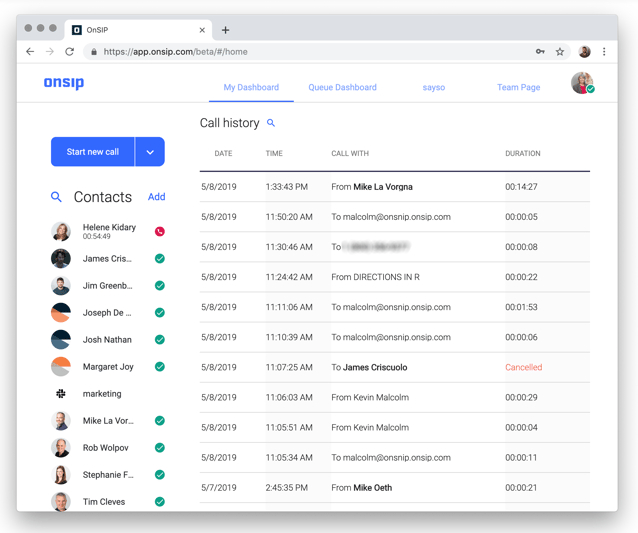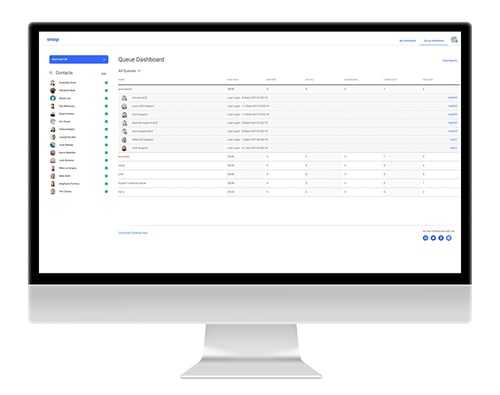A call detail record (CDR) provides information about calls made over a phone service. Here are some frequently asked questions to help you understand how CDRs can be helpful for a variety of purposes.
Let’s start with the basics.
What Does CDR Mean?
In the telecom industry, CDR refers to a call detail record, which provides information about calls made through a phone service. A CDR report can offer businesses call data about where, when, and how calls are made for reporting and billing purposes.
Call detail records (CDRs) capture information on calls made on telephone systems, including who made the call (name and number), who was called (name if available, and number), the date and time the call was made, the duration of the call, and typically dozens of usage and diagnostic information elements (for example, features used and reason for call termination). CDRs are collected on a regular basis for processing into usage, capacity, performance and diagnostic reports. With such information, it is easier to spot exceptions to regular calling patterns, such as out-of-hours calling, international calls, significant variances from previous reporting periods and call destinations that do not reflect normal calling patterns for the enterprise.
What Information Is Included in a Call Detail Record (CDR)?
A CDR provides metadata - data about data - on how a specific phone number and/or user is utilizing the phone system. This metadata typically includes:
- When the call took place (date and time)
- How long the call lasted (in minutes)
- Who called whom (source and destination phone numbers)
- What kind of call was made (inbound, outbound, toll-free)
- How much the call cost (based on a per-minute rate)
CDRs can also include SMS messaging metadata and any other official communications transmission. However, the contents of the messages/calls are not revealed through the CDR. The call detail record simply shows that the calls or messages took place, and measures basic call properties.
Why Are CDRs Important?
A CDR log lists every billable communications transmission on your phone system. This allows phone companies to generate your phone bills, and lets you keep definitive records of how and when your phone system was used. They are primarily used by businesses to assist in call reporting and billing.
Billing departments use CDRs to resolve disputes, keep records of how funding is spent, and log usage of the telephone system. IT departments can also use CDRs to determine if there were any disruptions in phone service.
CDRs can be used to identify calling trends and gain insights into employees’ use of phones. This allows managers to analyze patterns and trends so they can make better management and personnel decisions.
How Can a Call Data Report Help Your Business?
A CDR report typically shows data broken down either by user or by phone number. A CDR report generated for a single user can show specific metrics, such as call volume and minutes, for that person. A CDR for a phone number gives more of a bird's-eye view of how your phone system is used on a business-wide level.
Generating CDR reports for individual employees is useful to find out who's on the phone the longest, what the call durations are, and how much money each employee spends per call. This can lead to better management of your employees and save resources for your business.
A CDR report for a particular phone number, on the other hand, can indicate how much money specific offices or groups are spending on calling minutes. This is useful if your business has several phone numbers for different locations or departments. This kind of report allows you to take an aggregate look at your company's calling activities.
Are Any Items Left Off CDR Reports?
Communications transmissions that do not cost money are generally kept off the CDR. Many Voice over Internet Protocol (VoIP) services offer free SIP-to-SIP calling. This is when a VoIP phone calls another VoIP phone without ever going through the public switched telephone network (PSTN).
These calls are not listed on the CDR, because they're not billed. However, calls made to landlines, mobile phones, and international numbers are always logged, because they're charged on a per-minute basis.
Cloud phone systems usually offer ways to view the call logs of Internet calls that are not billed. This call data is often found in the "call history" or "recent calls" of your web phone service.

How Do I Generate a CDR Report?
CDR reports are typically included as part of the reporting features of a hosted VoIP service. Admin users can sign in to a web-based admin portal to view and download reports for specific time periods. CDRs may also be found listed inside formal phone bills mailed to you by your provider.
Better Calling Data
Call detail records provide you with detailed logs about your phone activity. You can use the data to verify billing disputes, monitor employee phone activity, and keep track of when, where, and how your phone system is used.
If you're looking for deeper insights into your calling activity, you may want to consider call center reporting features. For example, OnSIP's Enhanced Queues feature comes with a real-time dashboard of your different calling queues and custom reporting.

CDRs can study calls that have already taken place, but Enhanced Queues give you the ability to interact with both employees and customers as the call is unfolding. The dashboard allows you to observe average caller wait times, run historical reports, and implement call center features to streamline your business phone system. This information can help you measure various call tracking metrics to optimize your team's phone performance.


